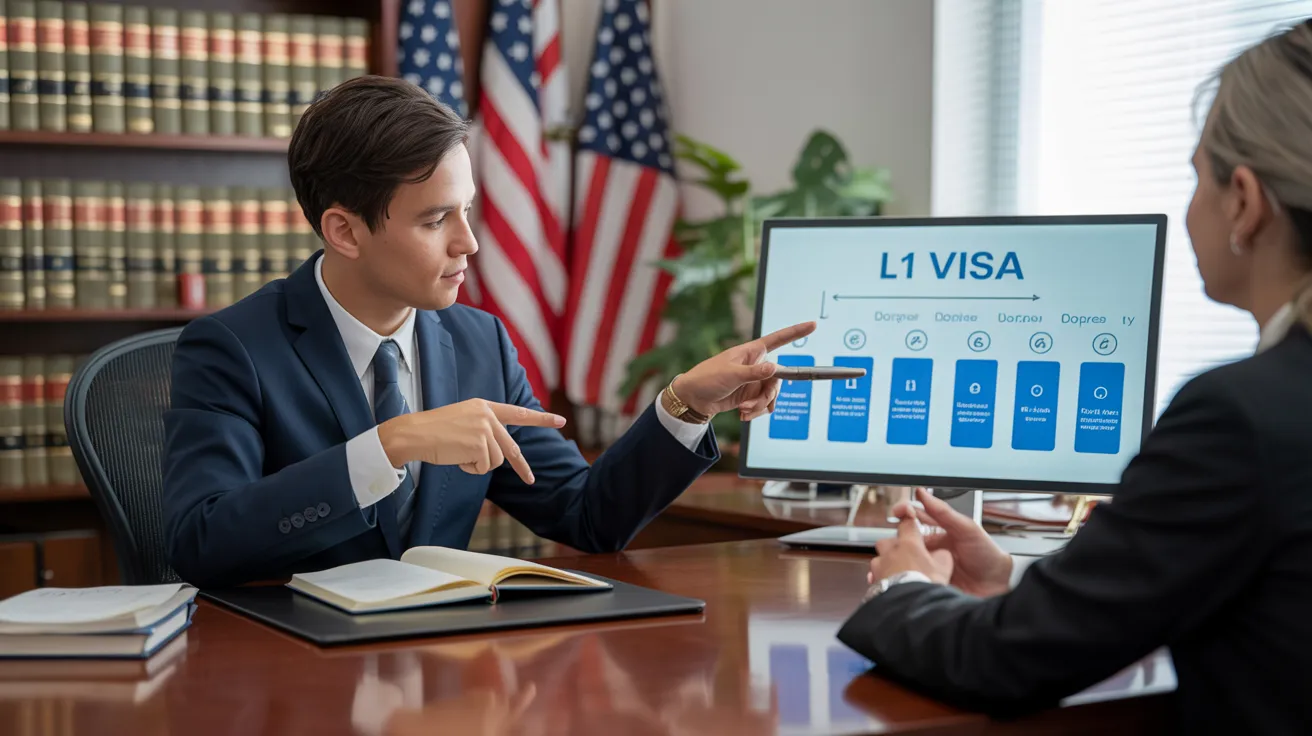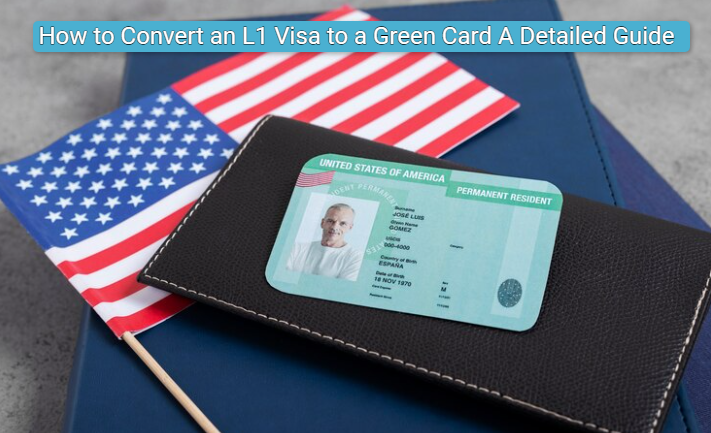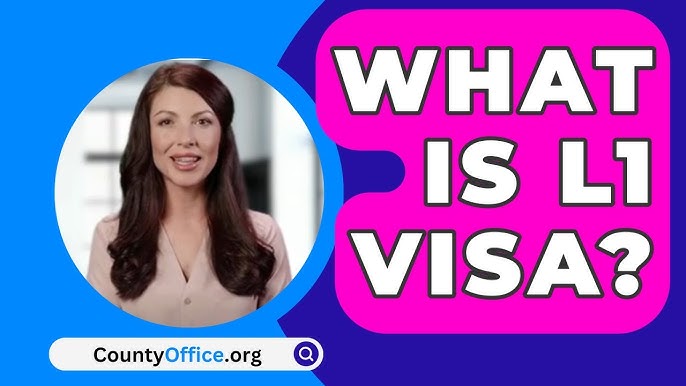Opening Opportunities: A Comprehensive Overview to the L1 Visa Process
The L1 visa procedure provides an important path for multinational companies seeking to move vital workers across boundaries. Understanding the nuances of eligibility standards, the differences between L-1A and L-1B visas, and the ins and outs of the application procedure can greatly impact a candidate's success. Maneuvering this complicated landscape is not without its difficulties, and cautious interest to documentation and company sponsorship is essential. As we check out the crucial parts of this procedure, the approaches for overcoming potential obstacles will end up being apparent, revealing how informed prep work can open a globe of possibilities.
Understanding the L1 Visa
Understanding the L1 visa involves acknowledging its importance as a vital device for multinational companies looking for to transfer competent employees between international workplaces. This non-immigrant visa category facilitates the motion of execs, supervisors, and specialized expertise workers to the USA, therefore making it possible for companies to keep functional connection and harness international skill efficiently. The L1 visa is divided right into 2 key classifications: L-1A for managers and execs, and L-1B for employees possessing specialized knowledge.The L1 visa serves an essential role in boosting a business's one-upmanship in the worldwide market - L1 Visa Requirements. By enabling firms to transfer their crucial workers, organizations can ensure that crucial tasks are handled by qualified individuals that are already familiar with the company's culture and operational processes. This internal transfer system not just fosters expertise sharing however likewise advertises innovation and collaboration throughout borders.Moreover, the L1 visa is frequently preferred for its relatively simple application process compared to various other visa categories, as it enables for double intent, allowing owners to seek permanent residency while on a momentary job visa. This attribute makes the L1 visa specifically appealing for both companies and workers, as it streamlines the path for competent professionals to develop lasting residency in the USA
Qualification Criteria
Eligibility for the L1 visa depends upon a number of essential standards that assure both the staff member and the employer satisfy specific qualifications. This non-immigrant visa is developed for multinational business to transfer employees from consular services to united state counterparts.Firstly, the employer needs to be a qualifying company, which includes a moms and dad business, branch, associate, or subsidiary of an U.S. business. The firm should have been doing business for at least one year both in the united state and abroad. This ensures that the business has enough operational stability and a genuine presence.Secondly, the staff member should hold a supervisory, executive, or specialized understanding placement. For L1A visas, the candidate needs to show supervisory or executive credentials, while L1B visas focus on specialized understanding relevant to the organization's products, services, or processes. Additionally, the worker has to have worked for the foreign entity for at least one continual year within the last three years prior to their application.Lastly, the worker's duty in the united state must line up with their previous position, guaranteeing that their skills and competence are leveraged for the business's advantage.
Sorts Of L1 Visas
The L1 visa group comprises two key types developed to assist in the transfer of workers within international firms: the L1A visa for managers and execs, and the L1B visa for employees with specialized expertise. Each type offers unique functions and has specific eligibility criteria.The L1A visa is tailored for people that hold managerial or executive positions within a firm. This visa makes it possible for high-level employees to transfer to an U.S. branch, subsidiary, or associate of the very same organization. Applicants for the L1A visa need to demonstrate that they have actually been employed in a supervisory or executive capacity for at the very least one continual year within the past 3 years prior to their application. In addition, this visa uses a longer duration of remain, originally provided for three years, with the opportunity of expansions for approximately seven years.In comparison, the L1B visa is planned for professionals with specialized knowledge pertaining to the firm's items, services, or procedures. To certify, candidates should confirm that their proficiency is critical to the organization which they have benefited at the very least one continuous year within the last three years in a function that needed this specialized expertise. The L1B visa is at first approved for three years, with expansions readily available for approximately five years.Both visa types are crucial for business looking for to enhance their international procedures by leveraging proficient employees, consequently advertising innovation and efficiency within the U.S. market.
Application Process
Guiding via the L1 copyright process includes several vital steps that should be meticulously followed to assure a successful end result. The procedure starts with the united state company, who must initially develop qualification by demonstrating a qualifying partnership with the international entity and validating that the staff member satisfies the particular demands for the L1 visa group being sought.Once eligibility is confirmed, the company starts the procedure by filing Type I-129, the Request for a Nonimmigrant Employee, with the United State Citizenship and Migration Provider (USCIS) This type should be gone along with by a thorough summary of the task tasks to be carried out, the business structure of both the united state and international entities, and the staff member's certifications. It's important to confirm that all information is precise and complete, as noninclusions or errors can result in delays or denials.Upon approval of the I-129 application, the following action involves the worker looking for the L1 visa at an U.S. embassy or consular office in their home country. This stage requires the conclusion of Form DS-160, the Online Nonimmigrant copyright, and arranging a meeting. During the interview, the candidate has to present evidence supporting their qualifications and the employer's petition.After the visa is approved, the staff member can get in the United States to operate in the marked duty. Overall, careful preparation and adherence to every action of the application procedure are vital for a successful L1 visa outcome.
Called for Documentation

Necessary Forms Needed
Steering the L1 Visa process needs cautious focus to the crucial forms and documents necessary for a successful application. The primary type required is the Type I-129, Petition for a Nonimmigrant Employee, which must be completed and submitted by the U.S. company. This form describes the information of the employment offer and the qualifications of the staff member seeking the L1 Visa.Alongside Kind I-129, the applicant will require to complete Type I-539 if coming with member of the family are additionally getting visas. Additionally, the employer needs to supply evidence of the qualifying relationship in between the united state entity and the international entity, usually demanding the submission of business records such as posts of incorporation or monetary statements.Moreover, it is necessary to consist of the L Category Supplement to Kind I-129, which defines the sort of L Visa being asked for-- either L-1A for supervisors and executives or L-1B for employees with specialized knowledge. Lastly, candidates should ensure that all forms are authorized and dated appropriately, as incomplete submissions can cause hold-ups or denials. Properly assembling these important forms lays the foundation for a smoother L1 copyright process.

Supporting Evidence Requirements
Sustaining documents is important for a successful L1 copyright, as it validates the claims made in the application. Candidates need to give a variety of files to show qualification for the visa, which is categorized into 2 main types: evidence of the certifying connection in between the U.S. and foreign entities and evidence of the applicant's qualifications.To develop the relationship, applicants ought to submit documentation such as company organizational graphes, monetary declarations, and proof of ownership. These documents validate that the foreign business has a qualifying relationship with the U.S. company, whether as a parent business, subsidiary, branch, or affiliate.For the applicant's certifications, vital documents consist of an in-depth work letter from the foreign company, describing the candidate's work title, tasks, and duration of work. Additionally, instructional credentials, such as levels and diplomas, should be given to show the candidate's know-how in the relevant field.
Company Sponsorship Documents

Common Difficulties
Maneuvering the L1 visa procedure provides several typical difficulties that candidates should know. Secret concerns typically consist of stringent documents demands, possible delays in processing times, and the need for stringent lawful conformity. Comprehending these barriers can aid applicants better prepare and minimize risks throughout their copyright journey.
Paperwork Demands
The L1 copyright procedure frequently presents significant difficulties associated with documentation needs. Applicants need to give substantial documentation to establish eligibility, which can result in complication and possible hold-ups. Trick documents consist of evidence of a certifying relationship in between the united state and international company, evidence of the applicant's employment history, and detailed info regarding the task function in the U.S.One typical challenge is collecting sufficient evidence to demonstrate the nature of the qualifying partnership. Companies usually struggle to present clear business graphes or economic declarations that highlight the link between the entities. Furthermore, making sure that letters of assistance from companies properly show the candidate's work responsibilities and certifications is crucial, as obscure summaries can lead to denials.Another problem develops from the requirement for detailed job descriptions that straighten with the L1 visa classifications. Applicants must express not only their existing function yet also their managerial or specific knowledge responsibilities plainly. This requires a complete understanding of both the candidate's position and the governing language utilized in L1 applications.
Handling Dead Time
Experiencing delays in handling times is a common difficulty encountered by L1 visa applicants, often resulting in disappointment and uncertainty. Numerous aspects add to these delays, consisting of high application volumes, enhanced examination of applications, and administrative backlogs within the united state Citizenship and Immigration Services (USCIS) Applicants might discover that processing times can differ greatly depending on the solution center managing their application, as each facility has its own workload and effectiveness degrees. Additionally, the intricacy of the applicant's instance, such as the need for considerable documentation or information, can even more extend wait times.In some circumstances, issues connected to the candidate's current immigration standing or previous visa history might likewise bring about additional delays, as USCIS might need more review What Is L1 Visa or info. It is crucial for candidates to remain positive throughout this duration, maintaining open communication with their companies and legal agents to deal with any type of prospective worries promptly.Understanding these handling time obstacles can assist L1 visa candidates prepare for feasible delays and alleviate the effect on their shift and occupation strategies. Perseverance and persistance are important merits in steering this intricate process.
Lawful Conformity Issues
Several L1 visa applicants come across lawful conformity issues that can complicate their trip towards obtaining the visa. Recognizing and sticking to the certain regulations established by the united state Citizenship and Migration Solutions (USCIS) is vital. Usual difficulties consist of showing the qualifying partnership in between the international and U.S. companies, in addition to confirming that the applicant possesses the requisite specific understanding or supervisory capacity.Additionally, applicants need to offer comprehensive paperwork describing their task responsibilities, company framework, and monetary feasibility of the U.S. entity. Insufficient or inaccurate paperwork can cause delays and even denials. Employers have to also ensure that they abide by labor legislations, including wage and working problem requirements, which can impact visa eligibility.Another typical issue entails preserving conformity with the regards to the visa when given. Changes in work status, work obligations, or company framework can necessitate modifications to the visa, which otherwise attended to promptly can cause legal problems. Consequently, remaining educated regarding conformity requirements and looking for legal advise when necessary is essential to browse the intricacies of the L1 visa process successfully.
Tips for Success
Success in the L1 copyright procedure typically hinges on careful prep work and focus to information. To enhance your opportunities of authorization, start by completely understanding the qualification requirements for both the L1A and L1B visa groups. Assess whether your position at the firm qualifies as managerial, exec, or specialized expertise, as this categorization significantly influences your application.Next, collect substantial documents that validates your cases. This includes organizational charts, in-depth task descriptions, and proof of the business's functional structure. Clear and concise proof of the certifying relationship in between the united state entity and the international entity is crucial. Confirm that all records are organized logically and provided in a professional way, as this reflects your commitment and seriousness concerning the application.Engage the solutions of a knowledgeable immigration lawyer that focuses on L1 visas. Their experience can show important, assisting you via facility regulations and guaranteeing that all documents abides with present legislations. Additionally, plan for the interview by practicing solution to typical concerns and preparing to discuss your function and contributions to the company extensive.
Frequently Asked Concerns
Can Household Members Accompany the L1 Visa Owner?
Yes, relative of L1 visa holders, including spouses and unmarried youngsters under 21, can go along with the key visa owner. They might likewise obtain L2 visas, which permit them to live in the USA.
The Length Of Time Can I Keep on an L1 Visa?
The L1 visa allows initial remains of as much as three years, with the opportunity of extension. L1A visa holders might stay for a maximum of 7 years, while L1B visa holders can stay for 5 years.
Can L1 Visa Holders Request a Permit?
Yes, L1 visa holders can look for a permit. L1 Visa Requirements. They may seek irreversible residency with employment-based classifications, normally needing sponsorship from their company, offered they satisfy the needed certifications and documentation requirements
What Occurs if My L1 copyright Is Denied?
If your L1 copyright is rejected, you may get a notification detailing the factors for denial. You can look for to appeal the choice, reapply, or check out different visa alternatives based upon your scenarios.
Are There Any Type Of Travel Limitations With an L1 Visa?
An L1 visa generally enables for global traveling; nevertheless, re-entry to the united state is contingent upon preserving legitimate status. Vacationers should assure compliance with visa conditions to prevent complications upon return
Final thought
